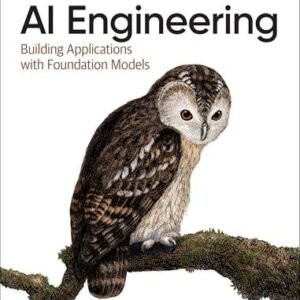As we stand on the brink of a new era in space exploration, the synergy between artificial intelligence (AI) and robotics is reshaping our understanding of the universe. Gone are the days when human astronauts were the sole pioneers navigating the vast expanse of space. Today, intelligent machines are not only accompanying them on their voyages but are often taking the lead in exploring the most remote corners of the cosmos. From autonomous rovers wandering the Martian surface to sophisticated satellites gathering data light-years away, AI-driven robotics are empowering researchers to push the boundaries of science and expand our cosmic horizons. In this article, we will delve into the transformative role of these advanced technologies in space research, showcasing how they enhance our ability to investigate celestial phenomena, gather critical data, and potentially pave the way for humanity’s future beyond Earth. Join us as we explore the fascinating intersection of technology and astronomy, where AI robotics are not just tools but essential partners in our quest to explore the final frontier.
Table of Contents
- Harnessing AI Robotics for Autonomous Space Missions
- Enhancing Data Collection: The Fusion of AI and Robotics in Space Exploration
- Revolutionizing Planetary Research: AI Robotics in Extraterrestrial Environments
- Future Directions: Strategic Recommendations for Integrating AI and Robotics in Space Research
- To Wrap It Up
Harnessing AI Robotics for Autonomous Space Missions
As humanity pushes the boundaries of exploration, the integration of AI robotics into autonomous space missions is revolutionizing our approach to the cosmos. AI algorithms enable spacecraft not only to navigate challenging terrains but also to make real-time decisions in environments where communication with Earth might lag behind. This autonomy is critical for missions to distant planets, where traditional communication methods are unfeasible due to the vast distances involved. For instance, AI-driven rovers can analyze geological formations, assess potential hazards, and select optimal paths for exploration—all without waiting for commands from mission control.
The capabilities of these intelligent systems are further enhanced by machine learning and computer vision technologies. By equipping spacecraft with the ability to learn from their surroundings, researchers can extract invaluable data from distant worlds. Some key features that highlight the advantages of incorporating AI in space missions include:
- Autonomous navigation and obstacle avoidance
- Enhanced data collection through adaptive learning techniques
- Real-time problem-solving abilities, allowing for quick adjustments during missions
To illustrate this transformative shift, consider the following table that captures notable missions utilizing AI robotics:
| Mission | AI Application | Outcome |
|---|---|---|
| Mars 2020 (Perseverance) | Autonomous hazard detection | Successful landing and exploration of Jezero Crater |
| Lunar Gateway | AI-enabled systems for orbital maintenance | Improved safety and efficiency in lunar operations |
| European Space Agency’s Rosalind Franklin | Automatic soil analysis | Identified potential biosignatures on Mars |
Enhancing Data Collection: The Fusion of AI and Robotics in Space Exploration
The integration of artificial intelligence and robotics is revolutionizing data collection methods in space exploration. By leveraging advanced AI algorithms, robotic systems can autonomously navigate celestial environments, significantly enhancing the efficiency of data gathering operations. This allows space researchers to focus on analyzing findings rather than managing tedious operational tasks. Various key benefits include:
- Real-time Decision Making: AI systems process vast amounts of data instantaneously, enabling on-the-spot adjustments and exploration strategy modifications.
- Enhanced Precision: Robotics equipped with AI can perform delicate tasks with high accuracy, reducing the risk of errors in data collection.
- Remote Operations: Instruments can be operated from great distances, allowing for exploration of hazardous or unreachable environments.
Furthermore, this synergy between AI and robotics leads to richer datasets, as machines can gather and analyze information from multiple sources simultaneously. The use of machine learning in identifying patterns and anomalies in space phenomena opens up exciting avenues for discovery. The following table summarizes some notable missions that exemplify this fusion:
| Mission | Robotic Technology | AI Features |
|---|---|---|
| Curiosity Rover | Autonomous Navigation | Pattern Recognition & Decision Making |
| Perseverance Rover | Sample Collection | Data Analysis & Machine Learning |
| James Webb Space Telescope | Adaptive Optics | Image Processing & Interpretation |
Revolutionizing Planetary Research: AI Robotics in Extraterrestrial Environments
As humanity sets its sights beyond Earth, the integration of AI robotics into planetary research is fundamentally transforming our approach to exploring extraterrestrial environments. These advanced technologies are not only enhancing our operational capabilities but also enabling unprecedented levels of precision and efficiency. With the ability to navigate challenging terrains, such as the rocky surfaces of Mars or the icy terrains of Europa, AI robots equipped with autonomous decision-making algorithms are embarking on missions that were previously deemed too risky or unmanageable for human explorers. The insights gathered by these autonomous agents are critical for assessing habitability and identifying potential resources for future colonization efforts.
The synergy between AI and robotics is paving the way for innovative tools designed to gather and analyze data instantaneously. Key functionalities include:
- Real-time data processing: AI systems can analyze geological samples and atmospheric data on the spot, providing immediate feedback to mission control.
- Environmental adaptability: With machine learning capabilities, robotic explorers can adapt their strategies based on changing conditions, such as dust storms or temperature fluctuations.
- Collaborative exploration: Swarms of micro-robots can work together to cover vast areas, enhancing our understanding of planetary features and phenomena.
| AI Robotics Applications | Benefits |
|---|---|
| Sample Collection | Increased accuracy and efficiency in gathering data |
| Terrain Mapping | Detailed topographical insights for mission planning |
| Data Transmission | Immediate analysis reduces lag in information flow |
Future Directions: Strategic Recommendations for Integrating AI and Robotics in Space Research
As we look ahead, the integration of AI and robotics in space research offers an unprecedented opportunity to enhance our exploration capabilities. To fully leverage these technologies, space agencies and research organizations should prioritize the development of collaborative frameworks that foster innovation and knowledge sharing. This could involve:
- Establishing partnerships with leading tech companies specializing in AI and robotics.
- Creating open-source platforms for shared resources and collaborative projects.
- Investing in educational programs to cultivate a workforce skilled in interdisciplinary fields such as astrobiology, machine learning, and robotic systems.
Moreover, targeted investment in autonomous systems and AI algorithms is crucial for lowering costs and minimizing human intervention in hazardous environments. Embracing agile methodologies in project management will allow researchers to adapt swiftly to new findings and technological advancements. Critical areas for investment include:
| Area of Investment | Potential Benefits |
|---|---|
| AI Navigation Systems | Improved accuracy in trajectory planning and hazard avoidance. |
| Robotic Assistants | Enhanced efficiency in conducting experiments on planetary surfaces. |
| Data Analysis Tools | Faster data processing and integration of findings from multiple missions. |
To Wrap It Up
As we stand on the brink of a new era in space exploration, the integration of AI robotics is proving to be a game-changer. These advanced technologies not only augment human capabilities but also expand the horizons of our scientific understanding. From autonomous rovers navigating uncharted surfaces to intelligent systems analyzing vast amounts of data, AI is transforming how we explore the cosmos.
the fusion of artificial intelligence and robotics marks a significant step forward in our quest to uncover the mysteries of the universe. As we continue to push the boundaries of what is possible, one thing is clear: the future of space research is intrinsically tied to the advancements in AI technology. Together, they are paving the way for groundbreaking discoveries that will enrich our knowledge of the cosmos and our place within it.
We invite you to stay tuned as we follow this exciting journey, where each mission and discovery fuels our imagination and brings us closer to understanding the infinite universe around us. Thank you for exploring the role of AI robotics in space research with us; we look forward to sharing more insights and breakthroughs in the field. Until next time, keep looking up!





